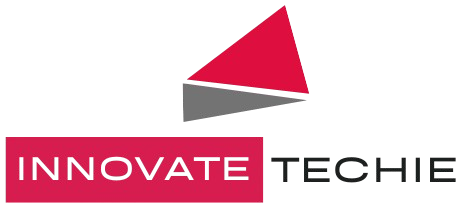One of the most effective methods for increasing traffic, leads, and money for organizations is still Google AdWords. Being the biggest online advertising platform, it provides unmatched visibility and reach, particularly for companies looking to market to a certain demographic. To achieve the maximum return on investment (ROI), you must optimize your Google Ads campaign for improved performance; merely launching a campaign is not sufficient.
We will discuss important tips and techniques for maximizing your ad spend, lowering cost per click (CPC), raising click-through rate (CTR), and eventually increasing conversions in this blog. In addition, we’ll discuss trends and statistics that demonstrate the significance of Google AdWords in the modern marketing mix and can help companies maximize the results of their campaigns by providing professional Google AdWords services in New York.
The Growing Importance of Google Ads
It’s critical to comprehend the expanding significance of Google Ads before delving into SEO strategies. Google has over 3.5 billion searches per day, so businesses trying to reach customers at the correct time can take use of this enormous potential.
Facts and Stats:
- Google Ads revenue reached $224 billion in 2023, accounting for over 80% of Google’s total revenue. This statistic reflects the reliance of businesses on Google Ads for driving growth.
- Businesses make an average of $2 in revenue for every $1 spent on Google Ads, showcasing the potential for high ROI with well-optimized campaigns.
- 41% of the world’s digital ad spend goes to Google Ads, making it the largest ad platform globally.
1. Setting Clear Goals for Your Campaign
Determining your goals clearly is the first step in optimization. Your goals will dictate the campaign’s structure and tactics, whether your objectives are to raise brand awareness, improve website traffic, generate leads, or increase sales. You can design a successful roadmap by establishing SMART goals—specific, measurable, attainable, relevant, and time-bound.
Optimization Tip:
- Define Campaign Objectives: Clearly define your objectives in Google Ads. If your goal is lead generation, focus on conversions. For brand awareness, prioritize impressions and reach.
- Utilize Conversion Tracking: This feature helps measure the effectiveness of your google ads by tracking actions such as purchases, form submissions, or newsletter sign-ups.
2. Keyword Research and Selection
Selecting the appropriate keywords is one of the most important components of a successful Google Ads campaign. Ad visibility is determined by keywords, thus it’s critical to choose terms that correspond with the search intent of your target market. Find high-traffic, low-competition keywords that complement your product or service by conducting in-depth keyword research.
Optimization Tip:
- Leverage Google’s Keyword Planner: This free tool provides insights into keyword search volumes, competition, and average CPC. It helps you discover relevant keywords and select the ones that fit your budget and campaign goals.
- Use Long-Tail Keywords: Long-tail keywords (e.g., “affordable web design services in New York”) tend to have lower competition and higher conversion rates because they are more specific to the user’s intent.
Facts and Stats:
- 15% of searches every day are unique, meaning they have never been searched before. This highlights the importance of continuously refreshing and updating your keyword list.
- Advertisers experience a 12% increase in conversion rates by using long-tail keywords in their Google Ads campaigns.
3. Crafting Effective Ad Copy
Your advertisement wording should be interesting, pertinent, and consistent with your keywords because it serves as a prospective customer’s initial impression of your company. Ad placement and cost reduction are directly impacted by well-written ad copy, which also raises your Quality Score and CTR.
Optimization Tip:
- Use Emotional Triggers: Incorporating emotional language, urgency (e.g., “limited time offer”), or problem-solving phrases (e.g., “get rid of acne today”) can encourage users to click on your ad.
- Include a Strong Call-to-Action (CTA): CTAs like “Shop Now,” “Get a Free Quote,” or “Sign Up Today” create a sense of urgency and guide users toward the desired action.
- A/B Testing: Run multiple variations of your ad copy to see which resonates best with your audience. Test different headlines, descriptions, and CTAs to continuously refine your messaging.
Facts and Stats:
- Ads with emotional triggers have been shown to achieve 25% higher CTR than ads that focus on just facts and features.
- Ad copy improvements can increase your Quality Score by up to 15%, leading to a lower CPC and higher ad rankings.
4. Utilizing Negative Keywords
Negative keywords should be used in addition to useful keywords in order to filter out queries that have no bearing on your company. Negative keywords save you money and enhance the effectiveness of your campaign by preventing users who are unlikely to convert from seeing your advertisements.
Optimization Tip:
- Create a Negative Keyword List: Review your search term reports regularly and add terms that aren’t converting to your negative keyword list. This helps ensure your ads are only shown to users with relevant search intent.
Facts and Stats:
- Adding negative keywords can reduce wasted ad spend by 10-30%, resulting in better overall campaign performance.
5. Targeting the Right Audience
Numerous audience targeting options are available with Google Ads, such as interest-based, regional, and demographic targeting. Making sure the correct people see your ads at the right moment is essential to campaign optimization.
Optimization Tip:
- Use Custom Audiences: Google allows you to create custom audiences based on user behavior and interests. For example, if you’re offering web design services in New York, you can create an audience of users who have recently searched for “web design companies in New York.”
- Location Targeting: For businesses targeting a local audience, such as digital companies offering Google Ads services in New York, geotargeting ensures that your ads are shown to users in specific locations. This can reduce irrelevant clicks and improve your ROI.
Facts and Stats:
- Geotargeted ads have been shown to increase CTR by 20% on average compared to non-targeted ads.
- Remarketing campaigns can boost conversion rates by 161% by targeting users who have already visited your website.
6. Optimizing Bidding Strategies
You must choose a bidding strategy that fits your goals and budget if you want to get the most out of your Google Ads campaign. Target CPA (cost per acquisition), automated bidding, and manual CPC bidding are among the bidding options available with Google Ads.
Optimization Tip:
- Start with Manual CPC: For beginners, manual CPC bidding allows you to control how much you’re willing to pay for each click. Once you have enough data, switch to automated bidding strategies to optimize for conversions.
- Use Smart Bidding: Smart Bidding uses machine learning to optimize your bids based on user behavior, maximizing conversions while staying within your target CPA.
Facts and Stats:
- Advertisers who use Smart Bidding report up to a 20% increase in conversions compared to manual bidding strategies.
- Automated bidding strategies have been shown to reduce CPC by an average of 15%.
7. Monitoring and Adjusting Performance
Monitoring the effectiveness of your campaign on a frequent basis is crucial because optimization is a continuous process. Google AdWords offers comprehensive analytics and insights that assist you in determining what is and is not effective.
Optimization Tip:
- Track Key Metrics: Focus on metrics like CTR, Quality Score, conversion rate, and CPC to gauge the success of your campaign. If you notice any underperforming keywords, ads, or landing pages, make the necessary adjustments.
- Schedule Regular Reviews: Set up a regular schedule to review your campaigns, either weekly or bi-weekly, to ensure they are performing optimally. During these reviews, tweak bids, update keywords, and refresh ad copy as needed.
Facts and Stats:
- Campaigns that are optimized weekly tend to see a 30% improvement in performance compared to those that are not regularly reviewed.
Conclusion
To optimize your Google Ads campaign, you need to have a plan, know who your target audience is, and be willing to keep an eye on it and make adjustments as needed. You may increase the effectiveness of your ads, make the most of your budget, and increase the number of conversions for your company by heeding the advice and insights shared in this blog.
Nevertheless, Google AdWords optimization can be a difficult and time-consuming procedure. Partnering with a seasoned team will help you take your efforts to the next level and guarantee that you’re receiving the greatest results possible. may assist you in achieving your marketing objectives, regardless of whether you’re new to Google AdWords or looking to optimize your current campaigns.

